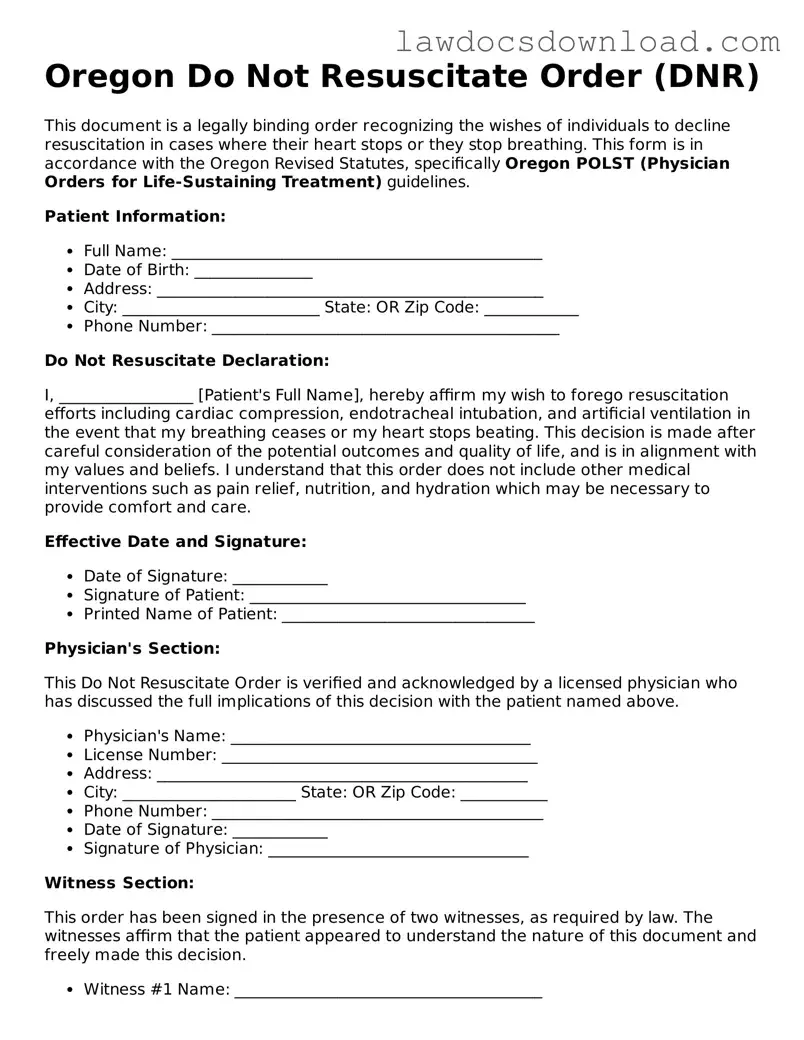Oregon Do Not Resuscitate Order (DNR)
This document is a legally binding order recognizing the wishes of individuals to decline resuscitation in cases where their heart stops or they stop breathing. This form is in accordance with the Oregon Revised Statutes, specifically Oregon POLST (Physician Orders for Life-Sustaining Treatment) guidelines.
Patient Information:
- Full Name: _______________________________________________
- Date of Birth: _______________
- Address: _________________________________________________
- City: _________________________ State: OR Zip Code: ____________
- Phone Number: ____________________________________________
Do Not Resuscitate Declaration:
I, _________________ [Patient's Full Name], hereby affirm my wish to forego resuscitation efforts including cardiac compression, endotracheal intubation, and artificial ventilation in the event that my breathing ceases or my heart stops beating. This decision is made after careful consideration of the potential outcomes and quality of life, and is in alignment with my values and beliefs. I understand that this order does not include other medical interventions such as pain relief, nutrition, and hydration which may be necessary to provide comfort and care.
Effective Date and Signature:
- Date of Signature: ____________
- Signature of Patient: ___________________________________
- Printed Name of Patient: ________________________________
Physician's Section:
This Do Not Resuscitate Order is verified and acknowledged by a licensed physician who has discussed the full implications of this decision with the patient named above.
- Physician's Name: ______________________________________
- License Number: ________________________________________
- Address: _______________________________________________
- City: ______________________ State: OR Zip Code: ___________
- Phone Number: __________________________________________
- Date of Signature: ____________
- Signature of Physician: _________________________________
Witness Section:
This order has been signed in the presence of two witnesses, as required by law. The witnesses affirm that the patient appeared to understand the nature of this document and freely made this decision.
- Witness #1 Name: _______________________________________
- Witness #1 Signature: __________________________________
- Date: ____________
- Witness #2 Name: _______________________________________
- Witness #2 Signature: __________________________________
- Date: ____________
